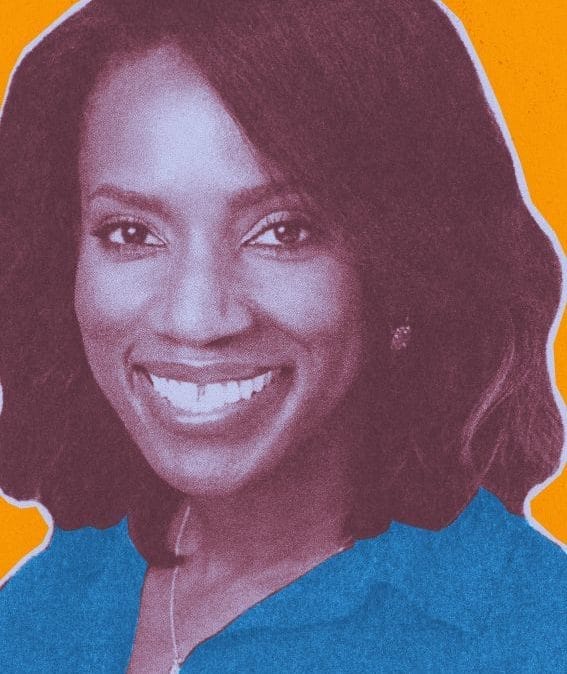The 1920s saw a seismic jolt in entertainment as Hollywood transitioned from silent films to talkies. But it didn’t happen overnight. It took years for audiences to adjust their expectations and then for technology to meet demand. Ninety years later, another slow-moving tidal wave transformed the entertainment industry. When the 2010s began, Netflix was primarily a DVD-by-mail rental service that had just started streaming movies and television shows directly to your home. By the end of the decade, it was a media behemoth spending more than $17 billion on original content in a single year. Every major media company already enjoying cable TV revenue now wanted a piece of the future of streaming.
The year 2020 was set up to be an epic melee between the big dogs: Disney+ and Apple TV+ debuted in November 2019; entrenched stalwarts Netflix, Amazon Prime, and Hulu launched new content at a frenzied pace; newcomers HBO Max and Peacock waited in the wings, arsenals of Dothraki and Dunder-Mifflin at the ready. Even brands we’d never heard of (Crackle, anyone?) were vying for our on-demand eyeballs. This isn’t called the “streaming wars” for nothing.
We all know what happened next: A pandemic, idleness, and a heightened appetite for escapism contributed to a boom for streaming services. Add the cancellation of live sports, and the conditions for cord-cutting couldn’t have been better. Cable and satellite TV providers posted historic losses in subscriptions during the first quarter of 2020, reducing traditional pay TV penetration to its lowest number of households since 1995.

Chika Chukudebelu W99
“I had a friend who works at another studio say to me that we should be called an essential business,” says Chika Chukudebelu W99, vice president of original programming at HBO Max. “And to a certain extent, it’s been true. Entertainment makes people feel good, even in difficult times. With people stuck in the house, it’s been an opportunity for us to leverage that captive audience.”
The streaming world made the most of that leverage. Disney+ surpassed its five-year goal of reaching 60 million to 90 million subscribers in just year one. The average household increased its streaming time by roughly 75 percent in the second quarter of last year, according to Nielsen. And scripted shows like Netflix’s The Queen’s Gambit — it had 62 million accounts tuning in during its first 28 days — broke streaming records en route to entering the cultural canon.
Niche platforms also thrived as homebound audiences gulped from the content fire hose. “There are so many different places you can go in streaming content in terms of edge or flights of fancy,” says Devin Griffin WG09, executive vice president and general manager at BET+. “Our sandbox is getting bigger.”

Devin Griffin WG09
Last year never devolved into a full-blown Hunger Games in the streaming space. In fact, the body count held steady at one. (Sorry, Quibi, we hardly knew you.) Yet as the calendar flipped to 2021 and the industry continued ramping up, there was cause for concern. The CEO of Discovery+ — a platform much talked about among insiders thanks to its international audience and non-scripted approach — predicted that a massive consolidation would hit the sector in the next 12 to 24 months, leaving only three to four major streaming channels in business. Analysts forecast a year of reduced new-subscriber growth across all channels, including the slowest year since 2015 for the leader in the space, Netflix. It was not a kumbaya moment.
“There are only 168 hours in a week, so it’s a zero-sum game,” says marketing professor Peter Fader. “But I don’t think we’re close to capping out people’s ability and desire to consume more content.”
There’s a broader cultural reason, though, to think that someone’s got to lose. “A lot more people are vaccinated. There’s going to be a release of pent-up energy,” says marketing professor Raghu Iyengar. “I wouldn’t be surprised if there’s what I call a boomerang effect — having seen so much of Netflix and Amazon Prime in the past few months, people will probably want to avoid them once things are more back to normal.”
While some industry forecasts are gloomy, no one is pumping the brakes, at least not publicly. In January, Peacock partnered with wrestling entertainment giant WWE on a deal reported to be worth more than $1 billion over five years. ViacomCBS launched Paramount+ two months later, with plans for extensive sports content. There are sure to be some losers in the end, but what’s also certain is that streaming has become an essential part of the entertainment landscape — and could shape our viewing habits for decades to come.
Streaming Gets Sticky
By the time “binge-watch” was added to the dictionary in 2017, streaming was ascendant, and the arms race was escalating. Now, streaming channels are dropping unprecedented amounts of money on new content and fighting over what’s already out there. HBO had to pay $500 million to wrestle Friends away from Netflix, which turned around and paid the same amount for the rights to Seinfeld. In January, Apple paid $25 million at Sundance to gobble up the rights to CODA, a dramedy about a deaf fishing family, shattering previous sales records for the film festival.

Ryan Roemer WG16
“Everyone is trying to differentiate their catalog, because they’re all trying to signal that they have the ambition to be a streaming service that matters to people,” says Ryan Roemer WG16, director of content acquisition at Hulu. “Apple doesn’t have a ton of content on its platform. So they were probably also looking for some headlines to say, hey, we’re still here.”
Getting lost in the shuffle is any platform’s biggest fear. As the streaming options explode, viewers are becoming more fickle. Consumers have grown adept at paying for one month — or signing up for a free trial — to binge a single series or catch one exclusive offering, then saying sayonara. So while it’s easier than ever to reach customers, you can lose them with a mouse click. “The broadband is better. People are used to being on their phones and in front of screens,” says Roemer. “But the other side of it is that you can literally quit today without talking to a customer service rep.”
A recent survey by Deloitte revealed that 46 percent of respondents had canceled at least one streaming service in the second and third quarters of 2020 — more than double the rate of cancellations in the 12 months before the pandemic. Now that streaming is mainstream, the trick is not just to capture eyeballs, but to keep them. “You have to have a critical mass of content that people don’t just want to watch but that will compel someone to continue coming back amidst the myriad subscriptions they already have,” says HBO’s Chukudebelu. “And I’m not just talking about TV.”
The pandemic has also brought financial hardship for many people, with the potential for more budget-tightening ahead. “I look up and I’ve got Spotify, I’ve got Netflix, I’ve got Headspace, and I’ve got all these services I’m subscribed to,” says BET+’s Griffin. “It’ll be interesting to see how consumers reallocate just in terms of spending their entertainment wallet.”
In the midst of this mad dash to attract new subscribers and build brand loyalty, it’s easy to forget that streaming is still in its infancy. Netflix announced its streaming service in 2007 — long before cord-cutting was a trend — and Hulu debuted the following year. Original programming was the next step, as Netflix acquired House of Cards in 2011; when that launched two years later, along with the runaway hit Orange Is the New Black, the streaming-first content game was on, and these services weren’t just delivery systems — they were Hollywood players. As the decade wound down, though, cable audiences declined, while Netflix saw its market valuation increase by more than 4,000 percent.

Peter Fader
Despite its increasing ubiquity, streaming has unproven profit models. Every platform is still figuring out how to maximize revenue by striking the right balance — or making a Sophie’s choice — between advertising and subscriptions. “I’m a huge fan of paywalls. You want people to pay for content; it’s a much more reliable business model than relying on advertising,” says Fader. “Plus, you get to understand your customers better. That’s the Netflix model. But setting the right price is hard. I’d say we’re in the first inning of that.”
Even if the trajectory of streaming keeps heading upward, there will be increased pressure from shareholders to generate more profits, not to mention budget holes left behind by COVID-19. AT&T, for one, took a big hit when its WarnerMedia television and film division lost $1.6 billion in revenue in the fourth quarter of last year because of production delays and theaters closing. The growth of HBO Max might help in the long run, but it’s unlikely to spike revenue in the immediate future.
“Prices will keep going up,” says Iyengar. “I would also be massively surprised if you don’t see more segmentation of some kind.” In other words, experiments like Disney+’s $30 straight-to-consumer offering of Mulan last summer or its decision to end free trials ahead of its Hamilton movie release will be increasingly common.
The tricky combination of stiff competition and uncertain price points could squeeze out some services over time. But for now, the major players appear willing to accept the uncertain economics of the streaming space in hopes of securing staying power. For example, Peacock, which has both paid and free versions, is releasing much of its catalog to nonpaying customers while hoping to tempt those watchers with The Office behind a paywall. Other platforms are taking bolder steps. At the end of 2020, Warner Brothers announced that all 17 of its feature-length movie releases this year will be available for streaming on HBO Max the same day they hit theaters. This gambit follows the company’s Christmas Day experiment of releasing Wonder Woman 1984 on the streaming service. Despite dour reviews of the film, the release helped spike HBO Max, doubling the number of people on the platform (which eclipsed 17 million users in December, according to the company).
“The biggest story in streaming in 2021 will probably be HBO Max’s attempt to forgo the traditional theatrical release and launch its entire slate day-and-date,” says Hulu’s Roemer. “Depending on how successful that is, I think a lot of streaming services are going to piggyback off that or just completely abandon that idea. It’s a big gamble. A lot of people will be watching how it goes.”
But is a future of direct-to-streaming for big-budget films viable? The idea raises its own set of cascading questions. How will theaters survive with fewer ticket sales? How do studios recoup their money if not via the box office? Can you sell action figures and merchandise without splashy movie premieres?
The good news is that time will soon tell. “Unlike the music industry 20 years ago, when record labels hid behind legalities and sued anyone who streamed music, we’re seeing market forces play out with streaming,” says Fader. “We saw that with Quibi. Some other platforms are not far off.”
Essential Global Growth
It wasn’t so long ago that people scoffed at Netflix for venturing into original programming. Today, it’s got a cabinet full of Emmys and more shows airing on a regular basis than most cable channels. (Netflix leadership includes vice president Larry Tanz WG99 and board member/former CMO Leslie Kilgore W87.) But can that content machine keep rolling when subscriber growth is expected to slow down in the U.S.? The answer appears to be a resounding yes. Netflix is releasing some 70 movies in 2021 — more than one per week — and according to analyst projections, the company’s spending on original content is expected to soar from roughly $19 billion this year to $26 billion by 2028. “U.S. markets are getting pretty saturated,” says the head of HBO Max International, Johannes Larcher WG95. “On the other hand, the international user base is growing by leaps and bounds. So that’s why all the major players are focused on this.”

Johannes Larcher WG95
Most of Netflix’s projected new subscribers over the next decade will come from international expansion, and that’s what continues to drive its stock price up. While the company has grown by an average of between two and three million new subscribers per year in the U.S. since 2019, it’s been adding 10 times that many across the world. By 2030, the company expects to have 300 million subscribers — the vast majority of them outside North America. Less than one percent of all pay TV households in India subscribe to Netflix, compared to about two-thirds in the U.S., whose population is a quarter of the size. There are also large swaths of entire continents — including Eastern Europe and most of Africa — where Netflix is quickly growing. (Consider the opportunities in Asia alone, with only 23.5 million subscribers on a continent of more than 4.5 billion people.)
“We’re in a business of scale. You gain operating leverage by increasing the number of subscribers,” says Larcher. “One of the most obvious answers is that [growth] is going to have to come from non-U.S. markets. That buys you a lot of content, a whole lot of TV shows and movies.”
While the conversation around “streaming wars” is overwhelmingly focused on U.S. households and the assumption of a shrinking pie, there’s good reason to think it shouldn’t be. Globalization of the market is not only driving up stock prices — it also has the potential to keep audiences locked in. Larcher anticipates an influx of shows like Germany’s Barbarians and the French series Lupin, which recently crossed over into the top 10 most popular shows on Netflix in the U.S. “The first show that really stood out there was Narcos. It was a partial Spanish-language show that was a mainstream success in the U.S. It would have been impossible 15 years ago,” says Larcher. “There’s going to be more content produced internationally at high quality.”
This international movement will be driven in part by tastes and in part by legislation. In 2020, the European Parliament passed a law requiring American-owned Netflix to have at least 30 percent of its content produced by European filmmakers and showrunners in order to operate in its countries. Similar legislation will probably crop up in other parts of the world, stimulating further expansion of companies’ catalogs.
All of the international content also feeds into the growing appetite from American consumers who are used to Netflix and demand fresh churn — and vice versa. “Today, you see terrific content from all over the world that will be viewed in the U.S.,” says Larcher. “And the same in the other direction.”
Fast-Forward to the Future
If there’s anything the streaming sector has thus far shown great affinity for, it’s staying nimble and utilizing data to match audiences with relevant content. When George Floyd was killed by police in Minneapolis last year, there was an explosion of interest in learning about race in America across the world. And while not every cable package includes BET, its on-demand service, BET+, was able to provide that content for new audiences. “Streaming allows us to engage with more folks, find bigger ideas and more exciting ways to tell stories that expand how Black people and the Black experience get out into the world,” says Griffin. “And that’s really our main focus.”

Raghu Iyengar
Besides, if scale is the issue, it can be achieved in other ways. The aforementioned Paramount+, which launched in March, is one example of how the economics of streaming could become more tenable for individual platforms. It created a unified banner for all of ViacomCBS’s streaming properties, including CBS All Access, BET, and Nickelodeon. Then there’s Disney+ and Hulu coming together to offer Pixar, Marvel, and other films in one place, rather than trying to satisfy all of those audiences on each platform.
“We don’t want to get into a situation where we’re replicating the entire linear system again,” says Hulu’s Roemer, referring to cable. “But more bundling of streaming services will allow us to offset the need to supply so much acquisition in our own profiles. We won’t have to do as much work individually.”
Optimism aside, talk of the streaming industry often comes back to the b-word. Let’s say the bubble does burst: Which streaming brands will weather the storm and even thrive? It depends entirely on whom you ask. “Every two or three years, someone tolls the bell for the death of Netflix, but they know what they’re doing,” says Fader. “Amazon has been really effective at tying streaming activities to seemingly unrelated points of engagement, like the stuff you buy and what you see and do inside your house.”
Indeed, there are arguments in favor of any of these streaming platforms. Amazon Prime has a competitive advantage by syncing with Amazon’s streaming hardware. HBO Max and Peacock are attached at the hip to Hollywood studios (Warner Brothers and Universal, respectively). Netflix continues to lead the world in subscriptions while leveraging machine learning and its unique consumer data. And platforms like BET+ have staked their ground in specific thematic areas of content that will make them distinct and appealing parts of larger streaming packages in the future.
But if there’s an audience exodus, the impact won’t be felt equally across platforms. Scale and diversification may be decisive factors. “Obviously, when people start to go back to theme parks, there’s going to be a huge complementarity between Disney+ and Disney parks,” says Iyengar. “And so there’s going to be this massive positive feedback for some platforms and their parent companies, which are gigantic organizations.”
It’s also possible the big-tent streaming channels may allow for more bespoke streaming players to ride out the storm that’s likely coming. And just maybe, the near-future landscape of streaming looks more like musical chairs than it does Lord of the Flies. “We’re in a position of transition, for sure,” say BET+’s Griffin. “I think the ways that players of different sizes and scale can survive, thrive, float, still remains to be seen.”
Malcolm Burnley is a freelance writer and podcaster living in Philadelphia.
Published as “This Streaming Life” in the Spring/Summer 2021 issue of Wharton Magazine.

























